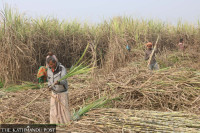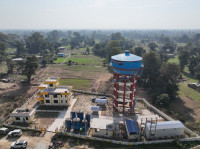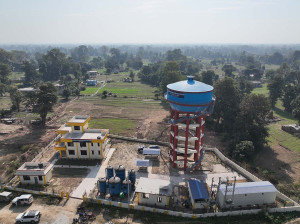Money
Domestic airlines poised to add regional aircraft
Domestic airlines are poised to add at least seven 70-plus seater aircraft to their fleets by February as they see increased travel demand ahead. Major carriers have placed orders for several short-haul regional aircraft due to a rapid rise in the number of air travellers.
Sangam Prasain
Domestic airlines are poised to add at least seven 70-plus seater aircraft to their fleets by February as they see increased travel demand ahead. Major carriers have placed orders for several short-haul regional aircraft due to a rapid rise in the number of air travellers.
Shree Airlines is expected to get a no-objection letter this week from the Civil Aviation Authority of Nepal to induct three 78-seater Bombardier Dash 8 Q400 turboprops into its fleet.
Shree has an all-Bombardier fleet of two CRJ-200s and two CRJ-700s. It commenced service on August 11 last year. Shree plans to bring all three aircraft by February next year, bringing its fleet to seven aircraft within a span of two years.
Buddha Air has announced adding two 72-seater ATR 72s into its fleet by February next year. Buddha’s closest rival Yeti Airlines will also add two ATR 72s also by February.
“We have planned to bring two ATR 72s by February and add another two 42-seater ATR 42s by 2019,” said Bhim Raj Rai, media manager of Yeti Airlines. “All ATR 72s will be operated from Kathmandu as we have decided to operate the existing Jetstream-41 from airports outside Kathmandu.” Rai said that passenger growth had prompted them to add medium-sized aircraft.
Buddha Air recently informed the Tourism Ministry that it would be adding two ATR 72s into its fleet by February. Buddha’s planes make 90 take-offs and landings daily which will increase to 100.
There has been an unprecedented growth in the number of domestic air passengers due to increased tourist movement and growing affluence among Nepalis. The announcement of the Visit Nepal campaign that aims to bring 2 million tourists by 2020 has also encouraged airlines to expand their fleets, according to industry insiders.
Buddha Air is aiming to enter the international long-haul sector by 2020, but fears that the European Commission’s putting Nepali airlines in the air safety list might create a setback for the flourishing industry. The airline has urged the government to immediately resolve the safety concerns pointed out by different international organisations.
The rise in the number of planes, coupled with increased international flights, has put immense pressure on the country’s strained aviation infrastructure. This led the aviation regulator to stop issuing air operator’s certificates for new airlines until another international airport is constructed in Bhairahawa.
“Obviously, Kathmandu airport is swamped, and we have asked all airlines to establish their bases or park their extra aircraft outside Kathmandu,” said Rajan Pokhrel, deputy director general of the aviation authority. “This will help us to reduce congestion at Kathmandu airport until Gautam Buddha International Airport in Bhairahawa is completed.”
The long-delayed second international airport in the birthplace of Buddha is expected to be completed by 2019 if construction continues at the current pace.
The year 2017 was a bumper year for domestic airlines, as they recorded a 39.47 percent jump in domestic air passenger movement following the addition of new aircraft to cater to the growing number of air travellers.
Domestic airline companies saw movement of a record 2.45 million passengers in 2017. It has been the most productive year for Nepal’s domestic airline industry as airlines added nearly a dozen aircraft to their fleets. With the addition of new planes, the Nepali skies saw an average of 255 domestic flight movements daily, up from 200 in 2016.
Demand for air travel continued to be high, with airlines reporting a double-digit growth in domestic passenger traffic in the first nine months of 2018.
According to the data of Tribhuvan International Airport, the country’s domestic passenger traffic grew 16.49 percent to 1.98 million in the January-September period this year. Flight movements increased 3 percent to 66,453 flights. This means the Nepali skies saw, on average, 246 domestic flights daily.




 11.12°C Kathmandu
11.12°C Kathmandu













